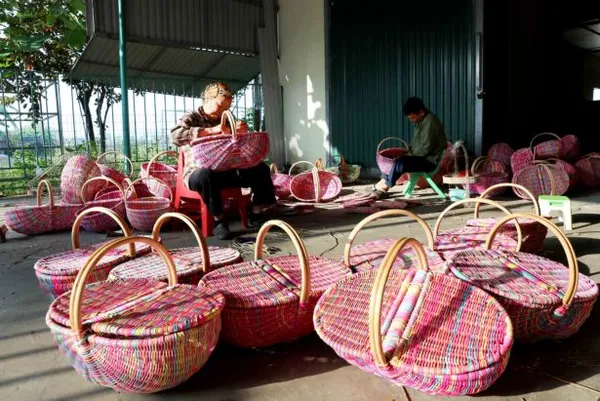 Society
Society


|
| Construction site of the Cao Lãnh bypass project in Mỹ Trà Ward, Đồng Tháp Province. VNA Photo |
ĐỒNG THÁP — The Cao Lãnh bypass project in the Mekong Delta province of Đồng Tháp, suspended for more than a decade, has resumed with renewed urgency as construction teams race against time to complete the road by September of this year.
The project, part of Phase 3 of the upgrade to National Highway 30 between Cao Lãnh and Hồng Ngự, had originally been launched in 2010 but was forced to halt in early 2011 following Government Resolution No. 11/NQ-CP.
The resolution aimed to tighten public investment and control inflation, leading to the temporary suspension of various infrastructure projects nationwide.
Despite land clearance being mostly completed and groundwork partially in place at that time, the project remained dormant for over 10 years.
Construction restarted in July 2022 with a total investment of over VNĐ900 billion (approximately US$35.3 million).
Initially slated for completion by the end of 2024, the project has since faced delays, chiefly due to a scarcity of critical construction materials such as sand and stone.
In recent weeks, on-site activity has intensified. At package No. 9, executed by Nhơn Thành Investment and Construction Joint Stock Company, workers and equipment have been mobilised to ramp up progress.
According to Trần Đăng Khoa, a technical officer of the company, the 3-kilometre section has struggled with shortages in sand and stone, particularly throughout 2024.
“Now that supply issues have been addressed, we are working overtime—some days until 8pm instead of the regular 5pm—to meet our revised target of late July 2025,” he said.
Similar efforts are taking place at package No. 11, a 6.5-kilometre section implemented by 207 Construction Joint Stock Company.
The contractor has completed over 75 per cent of the workload and currently has more than 30 labourers and 18 pieces of equipment on site.
Workers are focusing on unloading the sand surcharge and applying macadam base layers.
Nguyễn Đăng Phất, the site manager, noted that transportation of construction machinery via narrow canals posed challenges, while the prolonged lack of sand for surcharge and foundation treatment caused considerable delays.
“Even after waiting months for the soil to settle, we still faced shortages of crushed stone at the end of 2024. Only recently have materials arrived in sufficient volume, allowing us to accelerate progress and aim for completion by September 2025,” Phất said.
According to the Đồng Tháp Department of Construction, the first months of 2025 were marked by steep material costs and short supply.
Commercial sand imported from Cambodia was expensive, and contractors struggled to source key materials such as macadam and asphalt-grade stone.
These issues have now been resolved. The project has been allocated 25,000 cubic metres of sand for road embankments, along with contracts secured for 30,000 cubic metres of crushed stone and 15,000 cubic metres of asphalt stone from a supplier in An Giang Province.
To date, the construction value completed amounts to over VNĐ660 billion ($25.9 million), equivalent to more than 83 per cent of the contract’s total.
All 13 planned bridges have been structurally completed, with nine already surfaced with asphalt. In terms of drainage infrastructure, 24 cross-road culverts — including 14 circular culverts and 10 box culverts — have been built.
All 56 designated sections requiring foundation treatment have been completed. Sand embankments now cover nearly the entire route.
Macadam base work has passed 76 per cent, and asphalt surfacing has surpassed 50 per cent.
The bypass plays a critical role in the broader Cao Lãnh–Hồng Ngự transport corridor.
The first phase of the National Highway 30 upgrade — the Hồng Ngự bypass — has been in use for several years.
The second phase involved widening 40 kilometres of road from Phong Mỹ Bridge in Phong Mỹ Commune to the Hồng Ngự bypass. Both were completed and put into operation earlier.
The Cao Lãnh bypass itself stretches more than 14.5 kilometres and is divided into three construction packages (Nos. 9, 10, and 11).
It begins at the An Bình junction (now part of Mỹ Trà Ward) and ends near Phong Mỹ Bridge in Phong Mỹ Commune.
The road has a designed width of 11 metres and is intended to accommodate speeds of up to 80 kilometres per hour.
With key bottlenecks now resolved, local authorities and construction units are optimistic that the Cao Lãnh bypass — long awaited and previously stalled — will be completed and operational by September 2025, helping alleviate congestion on National Highway 30 and enhancing regional connectivity in the Mekong Delta. — VNS




